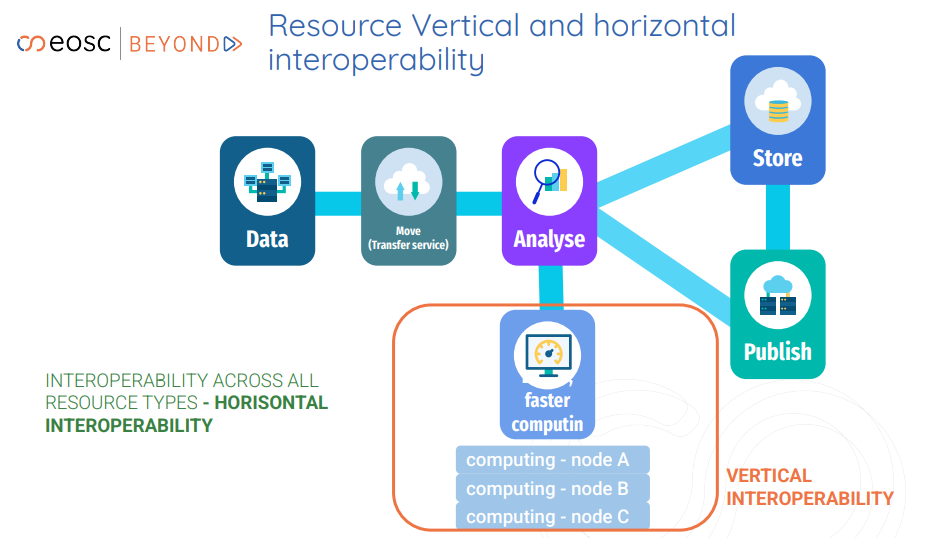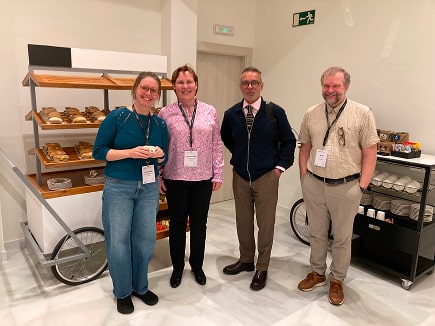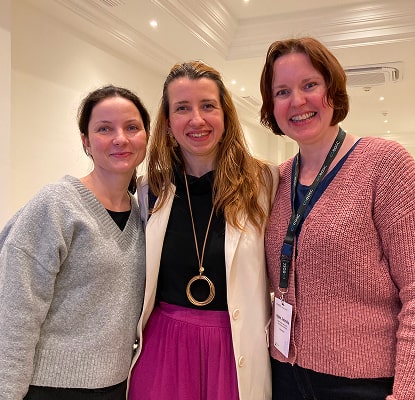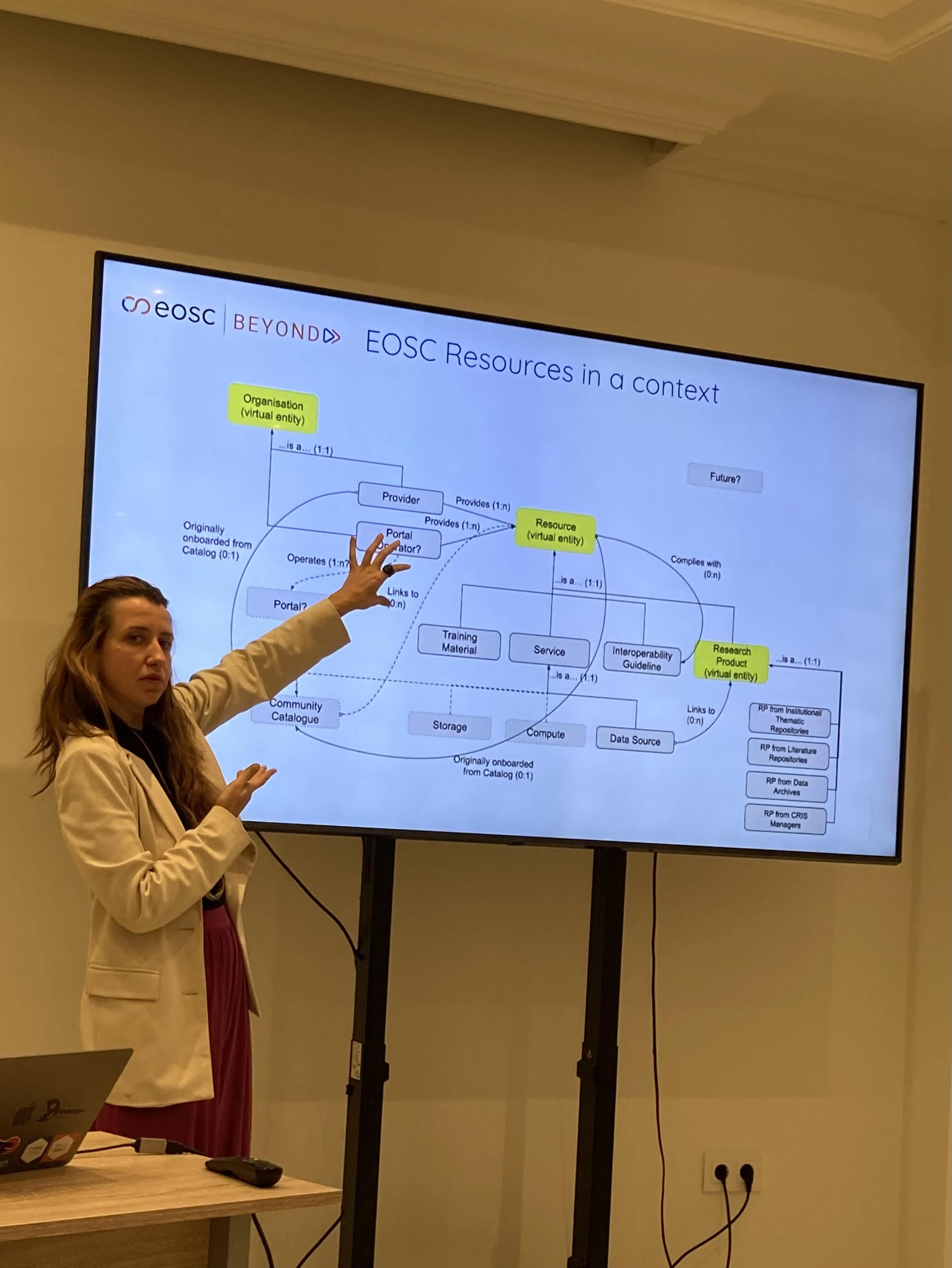
Public summary
Background and Aims
The EOSC Winter School 2025 kicked off with the Final FAIR-IMPACT Co-located Interoperability Workshop organised by CODATA and CNRS (France), with the support of the RDA and other FAIR-IMPACT partners, on the 20th of January 2025 in Seville. The DANS-led and Horizon Europe funded FAIR-IMPACT project brings together 24 research performing and research supporting organizations from across Europe to support the implementation of the European Open Science Cloud (EOSC).
The focus of the Final FAIR-IMPACT Interoperability Workshop was EOSC interoperability challenges and potential solutions, and the aim of the workshop was to discuss lessons learned from the earlier workshop series and to pass them on to the participants of the EOSC Winter School for inclusion in their breakout sessions.
The workshop had approximately 30 participants and was facilitated by Simon Hodson (CODATA), Matti Heikkurinen (CODATA) and Olivier Rouchon (CNRS).

Workshop Agenda
The Final FAIR-IMPACT Interoperability Workshop was divided into three parts: the Past, the Present, and the Future. The two presentations in the first part (The Past) set the context for the EOSC interoperability challenges as well as summarized prior workshop discussions on the topic. The second part (The Present) consisted of two presentations and a series of lightning talks all focused on a range of existing or potential interoperability solutions. Finally, the workshop concluded with a discussion of recommendations and next steps (The Future).

The Past of EOSC Interoperability
In the opening presentation, Javier Lopez Albecete (European Commission) focused on the importance of developing a minimum set of standards to increase the maturity, uptake and usability of interoperability tools and solutions. He also stressed the importance of careful assessment of trade-offs between inclusivity and efficiency as well as the completeness and sustainability of any solutions being developed or considered.
Next, Olivier Rouchon (CNRS-DDOR) offered a summary of the discussions from the prior FAIR-IMPACT workshop series, including the main legal, organisational, semantic and technical interoperability issues and approaches relevant to the EOSC Federation.
The Present of EOSC Interoperability
The main part of the workshop was dedicated to case studies and success stories, listed in the table below. The workshop presentations are available on Zenodo.
|
Participants/Speakers |
Topic |
|---|---|
|
Wolmar Nyberg Åkerström, NBIS - National Bioinformatics Infrastructure Sweden Uppsala University |
ELIXIR Interoperability Platform (EIP) in the EOSC context (in-depth presentation) |
|
Gorka Epelde Unanue, Vicomtech |
RAISE project |
|
Liise Lehtsalu, RDA Europe |
RDA TIGER |
|
Simon Hodson, CODATA |
CDIF update |
|
Nick Juty, The University of Manchester |
FAIR-IMPACT mappings framework |
|
Marc Portier, Flanders Marine Institute (VLIZ) |
FAIR-EASE and Blue-Cloud2026 Interoperability achievements and challenges |
|
Roksana Wilk, ACK Cyfronet AGH8 |
EOSC Beyond: Core solutions for the federated EOSC (in-depth presentation) |
Some of the key takeaways from the workshop, as noted in the collaborative notes by the workshop participants:

- The Cross-Domain Interoperability Framework (CDIF) development, especially the WorldFAIR+ activity cluster, will provide a comprehensive set of instructions for leveraging existing standards to facilitate interoperability across different disciplines. While CDIF is not an EOSC-specific framework, it is well aligned with the EOSC Interoperability framework.
- The RDA TIGER project supports community-driven development of interoperability recommendations and other outputs that are highly relevant to EOSC (for example, FAIR Mappings WG and working groups working on the GORC model).
- FAIR-IMPACT has developed practical recommendations for mappings based on existing community practices, defining common components for guidelines. These recommendations have been condensed into a Mapping Process Framework.
- The experiences from the FAIR-EASE project reinforced the messages of the opening presentation: it is important to have a minimum interoperability framework as a starting point for an iterative process. This also supports the view of interoperability as a continuum (instead of a boolean measure).
- Finally, the concrete, acute EOSC node interoperability challenges that EOSC Beyond project is addressing were discussed in detail. As such, the solutions developed by the EOSC Beyond project are crucial enabling solutions for the whole EOSC Federation.
The Future of EOSC Interoperability: Recommendations and Next Steps
The main recommendations and next steps from the workshop were as follows:
- User (and developer) journeys could improve the understanding of the ways EOSC could support reproducible research and innovation. For example, we should consider collecting data or analysing:
- Failed resource searches
- Path to optimal approaches with zero background knowledge
- Accounting for the use and tracking the reliability of resources (across the federation)
- EOSC interoperability efforts could benefit from cost-benefit/trade-off analysis. For example, assessment criteria for when to use standardised metadata (loss of information), mappings (expensive), rapid standardisation (risk lower participation of the communities).
- On the governance level, it would be useful to clarify who has the mandate to declare something EOSC compliant/EOSC approved - and how this governance framework deals with unanticipated issues (missed requirements or use cases not considered).